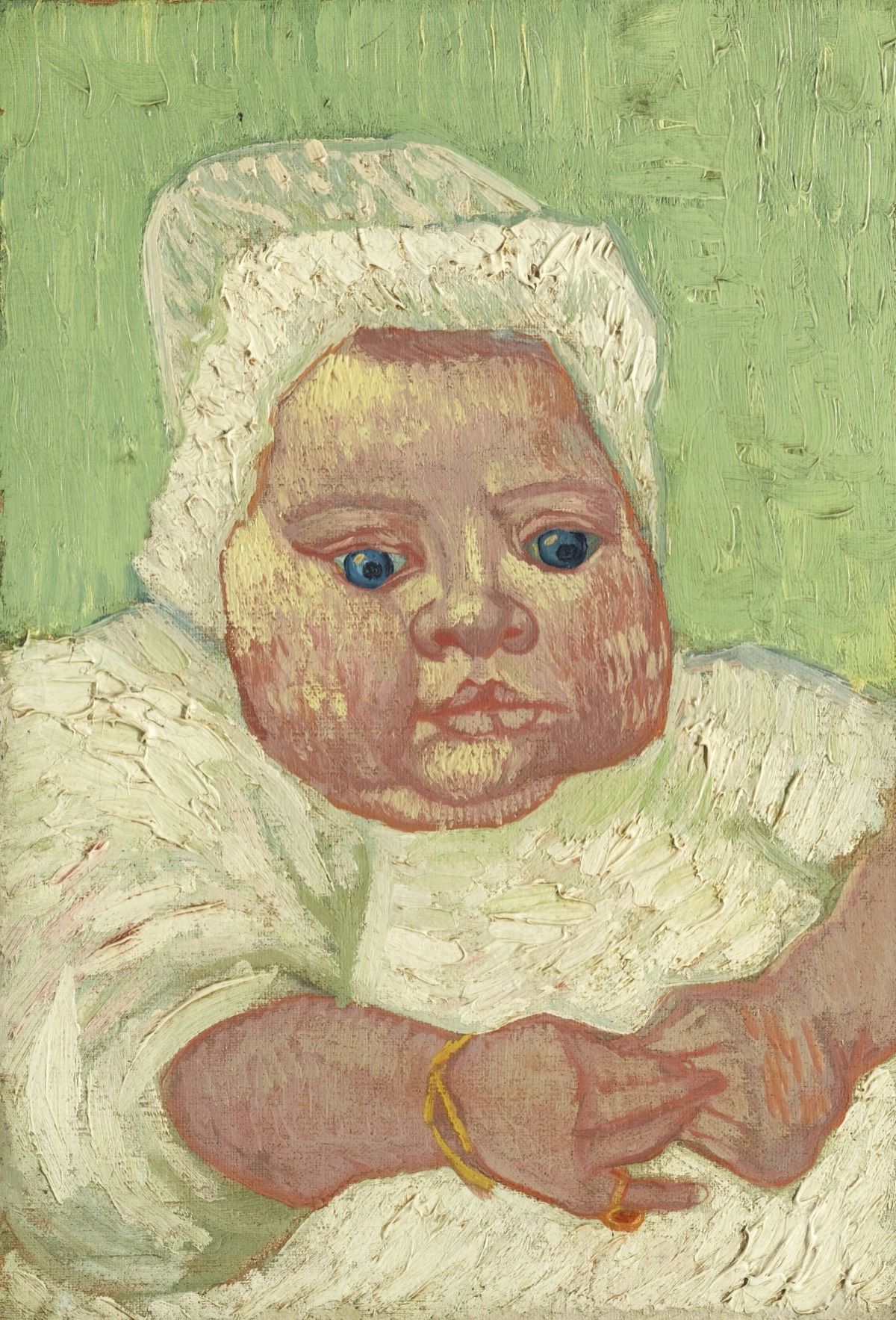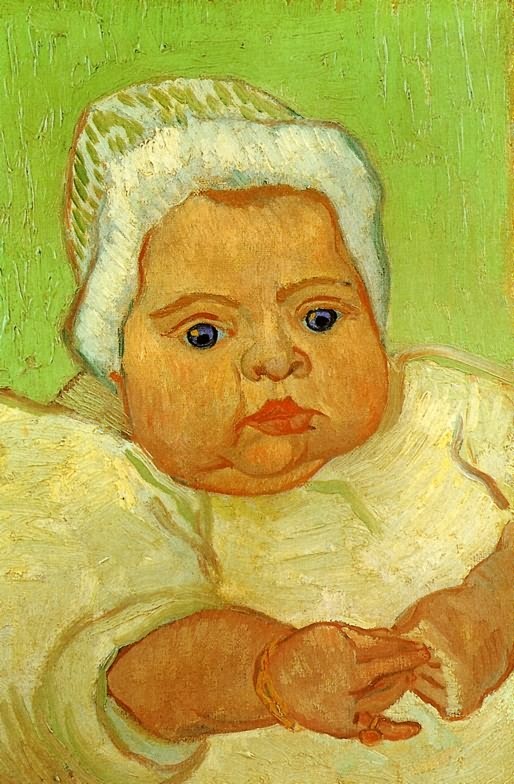The Baby Marcelle Roulin
Appreciation



The Baby Marcelle Roulin Nederland Vincent van Gogh Gallery and Appreciation
Marcelle Roulin, the youngest child, was born on 31 July 1888, and four months old, when Van Gogh made her portraits. She was painted three times by herself and twice on her mother’s lap. The three works show the same head and shoulders image of Marcelle with her chubby cheeks and arms against a green background. When Johanna van Gogh, pregnant at the time, saw the painting, she wrote: "I like to imagine that ours will be just as strong, just as beautiful �and that his uncle will one day paint his portrait!" A version titled Roulin's Baby resides at the National Gallery of Art in Washington, D.C.
In addition to the mother-daughter works where Marcelle is visible, Van Gogh also created several works where Augustine rocked her unseen cradle by a string.
Madame Roulin’s husband, the postman, was good friends with Vincent van Gogh while they were both in Arles. The portrait of Madame Roulin and her baby was painted through November and December 1888. Although an infant so young could have hardly posed for long, van Gogh managed to implicate his style of marking his subjects with the events of their lives. This portrait does not idealize the infant, but manages to capture the essence of the newborn. The child does not possess the cherub like qualities of babies depicted in the rococo style, but the definition of the contours of the cheeks are undeniably infantile. The expressions of pale pinks, blues, and yellows, in the baby’s face show van Gogh’s intent to demonstrate the nature of the skin. Madame Roulin, the mother, joins the portrait in two important ways. Madame Roulin’s hands are positioned, delicately holding her child. Van Gogh’s attention to their positioning and the light and color that make up her skin highlights the figurative idea of the hands. The details make the viewer conscious of the hands that care for the baby. Secondly Madame Roulin’s profile appears as a part of the stark yellow background. The outline of her figure mimics the contour of the baby and establishes a strong connection between mother and child.